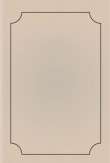You are here
قراءة كتاب Notes and Queries, Number 176, March 12, 1853 A Medium of Inter-communication for Literary Men, Artists, Antiquaries, Genealogists, etc.
تنويه: تعرض هنا نبذة من اول ١٠ صفحات فقط من الكتاب الالكتروني، لقراءة الكتاب كاملا اضغط على الزر “اشتر الآن"

Notes and Queries, Number 176, March 12, 1853 A Medium of Inter-communication for Literary Men, Artists, Antiquaries, Genealogists, etc.
id="footnotetag5" class="pginternal" tag="{http://www.w3.org/1999/xhtml}a">[5] nullius valoris; ix picos; ij trubulos; j cenovectorium[6] cum j rota ferro ligata; j cuva; iij instrumenta pro arbalistis tendendis; cxviij lanceas, quarum xviij sine capitibus; j cas cum sagittis saracenorum; ciij targettos, quorum xxiiij nullius valoris; j veterem cistam cum capitibus quarellorum et sagittarum debilem; ij barellos; vj bukettos cum quarellis debilibus non pennatis; j cistam cum quantitate capitum
quarellorum et quadam quantitate de cawetrappis in j doleo. Item ml vjc et xxviij garroks[7] de majori forma. Item, iiijxx garroks de eadem forma, sine capitibus. Item, ml vjc & xxiij garroks, de minori forma."
Query, What were the "capellæ de nervis de Pampilon depictæ?" Ducange cites the word, but does not explain it.
Toto atilo; quasi "attelage."
Footnote 2:(return)
Springaldus; "veterum profecto fuit balistæ genus, et, recentis militiæ, tormentum est pulverarium, non ita ponderosum ut majoribus bombardis æquari possit, nec ea levitate ut gestari manibus valeat."—Ducange.
Footnote 3:(return)
Arbaliste ad turnum; arbalists that traversed.
Footnote 4:(return)
Haukets; "sagum militare."—Ducange.
Footnote 5:(return)
Gambeson; "vestimenti genus quod de coactili ad mensuram et tutelam pectoris humani conficitur, de mollibus lanis, ut, hoc inducta primum, lorica vel clibanus, aut his similia, fragilitatem corporis, ponderis asperitate non læderent."—Ducange.
Footnote 6:(return)
Cenovectorium; "a mudcart."—Ducange.
Footnote 7:(return)
"Conjicio garrotos esse spingardarum tela, quibus pennæ æreæ aptabantur utpote grandioribus; carrellis vero pennæ plumatiles tantum." (See Ducange, sub voce Garrotus.)
DEAN SWIFT: AUTOGRAPHS IN BOOKS.
The biographer and the critic, down to the pamphleteer and the lecturer, have united in painting St. Patrick's immortal Dean in the blackest colours. To their (for the most part) unmerited scandal and reproach thus heaped upon his memory (as little in accordance with truth as with Christian charity), let me, Mr. Editor, oppose the following brief but emphatic testimony on the bright (and I firmly believe the right) side of the question, of the virtuous, the accomplished Addison:
"To Dr. Jonathan Swift, The most Agreeable Companion, The Truest Friend, And the Greatest Genius of his Age, This Book is presented by his most Humble Servant the Authour."
The above inscription, in the autograph of Addison, is on the fly-leaf of his Remarks on several Parts of Italy, &c., 8vo. 1705, the possession of which I hold very dear.
Permit me to add another beautiful example of friendship between two generous rivals in a glorious art.
"My dear Hoppner,
"In return for your elegant volume, let me request you will accept this little work, as a testimony of ardent esteem and friendship.
"While the two books remain they will prove, that in a time of much professional jealousy, there were two painters, at least, who could be emulous, without being envious; who could contend without enmity, and associate without suspicion.
"That this cordiality may long subsist between us, is the sincere desire of, dear Hoppner,
Yours ever faithfully,
Martin Archer Shee.
Cavendish Square, December 7, 1805."
This letter is written on the fly-leaf of Rhymes on Art, or the Remonstrance of a Painter, 2nd edit. 1805, also in my library.
Need I offer an apology for introducing a third inscription?
"To my perfect Friend, Mr. Francis Crane, I erect this Altar of Friendship, And leave it as the Eternall Witnesse of my Love. Ben Jonson."
This is in the beautiful autograph of rare Ben, on the fly-leaf of Sejanus his Fall, 4to. 1605, large paper and unique, and bound in the original vellum. It also contains the autograph of Francis Mundy, brother of the dramatist Anthony Mundy, to whom it once belonged. It is now mine.
Canonbury.
SHAKSPEARE ELUCIDATIONS.
In All's Well that Ends Well (Act II. Sc. 1.) the king, when dismissing the young French noblemen who are going to the wars of Italy, says to them:
"Let higher Italy—
Those 'bated that inherit but the fall
Of the last monarchy—see, that you come
Not to woo honour, but to wed it."
Mr. Collier calls this an "obscure passage," and offers no explanation of it, merely giving a note of Coleridge's, who, after Hanmer, proposes to read bastards for 'bated, saying of the passage itself: "As it stands, I can make little or nothing of it. Why should the king except the then most illustrious states, which, as being republics, were the more truly inheritors of the Roman grandeur?" Johnson, and the other preceding editors, seem to have taken a similar view of the passage.
I trust it will not be regarded as presumption when I say, that to me the place offers no difficulty whatever. In the first place, 'bate is not, as Coleridge takes it, to except, but to overcome, put an end to (from abattre); as when we say, "abate a nuisance." In the next, we are to recollect that the citizens of the Italian republics were divided into two parties,—the Guelf, or Papal, and the Ghibelline, or Imperial; and that the French always sided with the former. Florence, therefore, was Guelf at that time, and Siena of course was Ghibelline. The meaning of the king therefore is: By defeating the Ghibelline Sienese, let Italy see, &c. As a Frenchman, he naturally affects a contempt for the German empire, and


